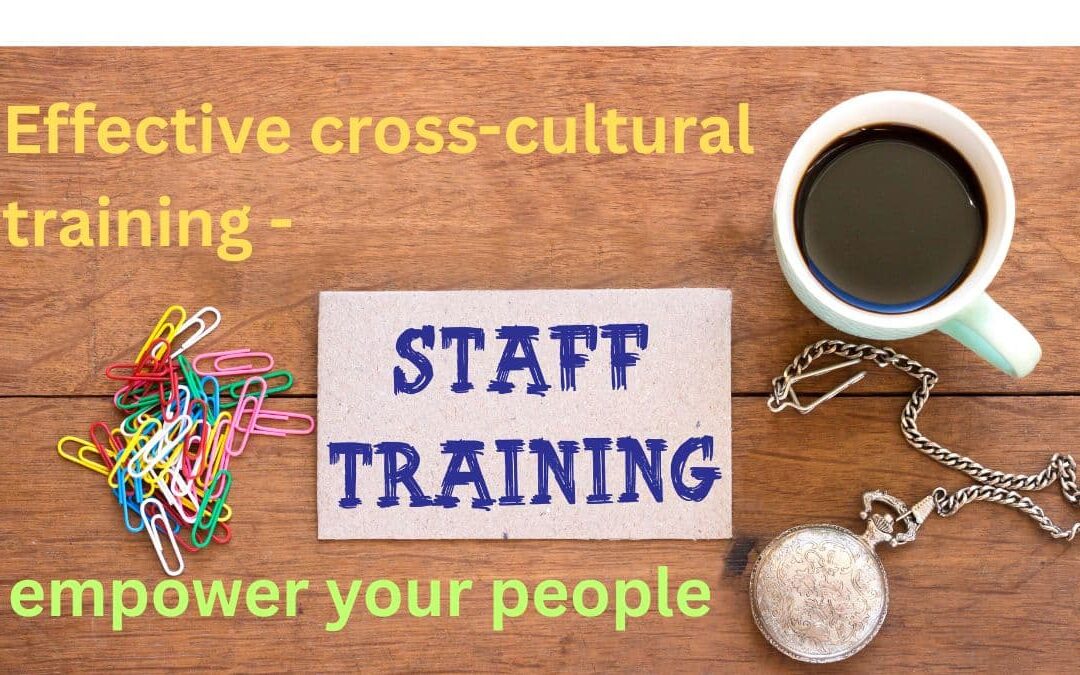The Advantage of Cultural Diversity: How Gugin Helps Organisations Thrive
The world has changed beyond recognition in the past two decades, driven by globalisation, deregulation, rapid technological advancement, and shifting political and economic landscapes. Navigating this complex environment demands an understanding of and deep respect for cultural diversity. In fact, the need to embrace and leverage cultural diversity has never been greater. As societies and workplaces become more multicultural, a vital question emerges: how can we truly take advantage of cultural diversity?
This article explores the challenges global organisations face and how they can evolve to take full advantage of cultural diversity. Gugin has worked with companies worldwide to unlock the benefits of cultural diversity, helping them build stronger, more adaptable, and inclusive cultures that reflect the realities of a globalised world.
Many of today’s mergers and acquisitions fail not due to poor financial planning or strategy but because of cultural clashes. Regional conflicts and tensions are often exacerbated by cultural misunderstandings and stereotyping. Despite dramatic external changes, many companies still rely on outdated systems of organising, motivating, and rewarding people—systems that fail to account for the richness and complexity of cultural diversity.
Over the past two decades, and particularly during the research for my doctoral dissertation, I have explored these challenges in depth. The insights shared here are the result of real-world experience and academic inquiry.
Before founding Gugin in 2001, I had already observed that most obstacles I faced as a manager in global firms were rooted in cultural differences. These differences—and the value systems behind them—frequently created friction that hampered performance and made achieving strategic goals far more difficult than necessary. Gugin was created to address this exact issue: to help organisations take advantage of cultural diversity, rather than viewing it as a problem to be solved.
So why don’t more companies invest in embracing cultural diversity? The biggest barrier isn’t structural—it’s psychological. Many still don’t see the advantage of cultural diversity. Instead, they perceive it as something to be managed, neutralised, or controlled.
In conversations with clients and students, I’ve discovered that most people fall into one of two categories: they either only trust what they can quantify in a spreadsheet, or they lack the authority within their organisations to shift the focus towards building culturally intelligent teams.
To better understand the challenges and perceptions around cultural diversity, I surveyed 1,292 middle managers working in companies operating on at least three continents. Middle managers were chosen because they live the tension between corporate culture and the various national and professional cultures daily.
The findings were eye-opening. An overwhelming 93% of respondents believed it was essential for their company to take advantage of cultural diversity. This represents a decisive break from the traditional top-down approach where headquarters dictate uniformity. Instead, a growing majority advocate for a more inclusive, adaptive cultural model.
Interestingly, few middle managers supported the idea of a dominant, uniform corporate culture. In contrast, senior executives often still believe that enforcing a single culture grants them more control. But they are frequently shielded from the daily realities of multicultural operations. Middle managers, however, experience the push and pull of competing cultural expectations firsthand.
Unfortunately, taking advantage of cultural diversity still isn’t a top priority for many CEOs. Occasionally, senior leaders claim that culture isn’t a concern in their organisation—revealing a lack of awareness about the deep and far-reaching impact of recent global shifts. The assumption that people will abandon their identities to conform to a corporate mould is not only outdated but damaging.
Globalisation doesn’t erase culture; it amplifies it. We don’t all become the same. Rather, we gain access to more choices, more perspectives, and more possibilities.
When companies actively take advantage of cultural diversity, they can outpace competitors both locally and globally. But doing so requires reconciling two often opposing forces: cultural closeness to local markets and the efficiencies of scale.
Through years of consulting and research, I am convinced that organisations must undergo a paradigm shift in leadership and structure to unlock the full potential of cultural diversity. Global leadership today requires cultural intelligence—the ability to see beyond one’s own norms and find synergy in difference.
At Gugin, we help organisations develop this cultural intelligence and integrate it into leadership development, strategy, and day-to-day operations.
To illustrate this point, I often use the analogy of the knife and fork—two very different tools that, when coordinated by an intelligent user, work seamlessly together. Similarly, diverse cultures can produce extraordinary results when properly aligned.
Resistance is natural. Leaders attending our workshops on cultural diversity are often sceptical at first. But as we guide them through understanding how their behaviours are shaped by their values and assumptions, scepticism gives way to curiosity—and then to commitment.
For instance, I once asked a multicultural project team to define the concept of “quality.” Each person offered a unique definition, revealing how differently people interpret even the most seemingly universal concepts. In another example, when I asked students from France and the USA what made a film “good,” the Americans focused on commercial success while the French cited awards and critical acclaim. If you want to make a film that’s both profitable and prestigious, you’ll need to take advantage of cultural diversity.
Despite the evolution of business, the way we organise people hasn’t changed much since the early 20th century. We moved from hierarchies to matrix structures—but little else. These models no longer suit the complex, multicultural, decentralised world we live in.
We need new organisational models. I’ve proposed one, which will be published in an upcoming book. But more importantly, we need leadership that prioritises cultural intelligence, and structures that enable businesses to respond quickly to a changing world while fully leveraging cultural diversity.
So how much is there to gain? My doctoral research explored that too—and the results were striking. Companies that succeed in embracing cultural diversity outperform those that don’t.
Gugin’s Role in Driving Cultural Transformation
Gugin has helped hundreds of companies across the globe realise the tangible benefits of cultural diversity:
We conduct cultural due diligence to reveal hidden sources of conflict and potential.
We facilitate workshops that build cultural intelligence and create alignment.
We help leadership teams embed cultural diversity into their strategy and culture.
If your organisation is ready to take advantage of cultural diversity, Gugin is ready to guide you. Let us help you turn complexity into competitive advantage.
Gugin – Where Culture Fuels Success
Cross-Cultural Training – crucial for your company’s success
Cross-cultural training boosts your success by enhancing communication, reducing conflict, and building culturally agile teams. Here is why Gugin leads the way.

EU Defence Collaboration Depends on Cultural Intelligence
Emotional and cultural intelligence are key to successful EU defence collaboration, enabling trust, cohesion, and innovation across borders.

Effective cross-cultural training – empower your people
Unlock your organisation’s potential with cross-cultural training that builds understanding, boosts collaboration, and drives inclusive, high-performing teams.

Fear as a Management tool? – Take the Survey
How often do you use fear to motivate? In the Gugin, we are about to start researching on how, when and why we as managers use fear as a management tool

Culture Audit – Get the truth about your organisation
A Culture Audit gives you crucial insight into how well your company culture is supporting your strategy and desired values. You might be in for a big surprise